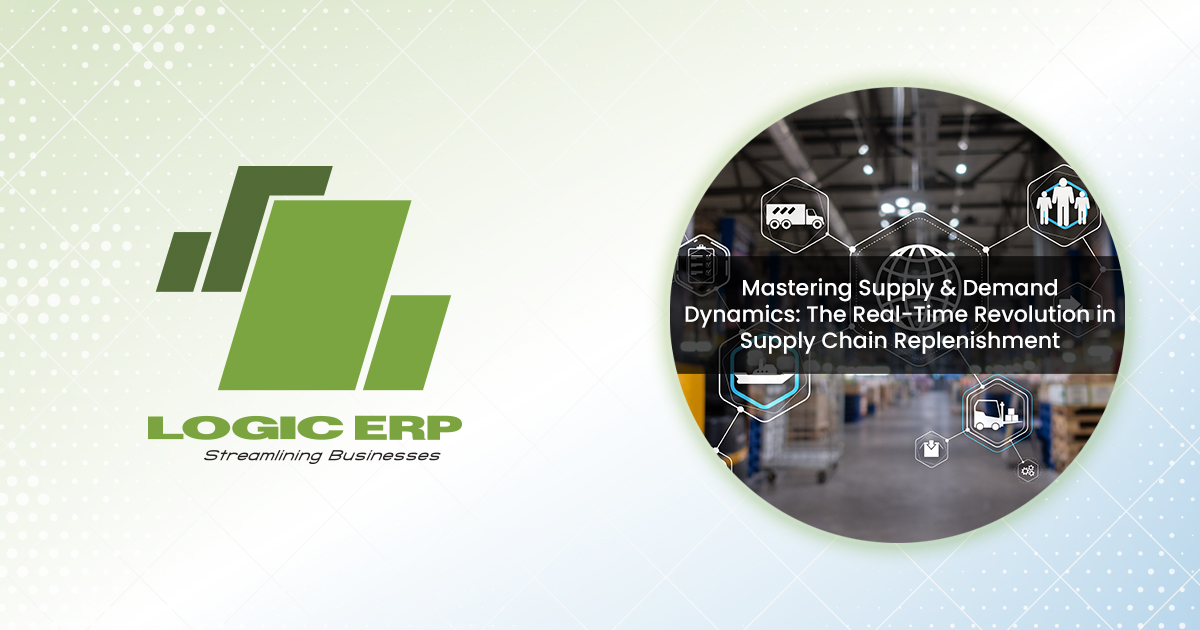

In the world of modern business, supply chain management has evolved significantly, becoming a critical component of organizational success. Companies now realize that efficient supply chain replenishment can make or break their operations. To meet the ever-changing market demands, businesses are increasingly turning to supply chain replenishment systems. These tools enable organizations to maintain the delicate balance between supply and demand in real-time, ensuring that products are readily available when needed. In this blog, we will explore the concept of supply chain replenishment and how it is enabled through advanced erp software.
The Importance of Supply Chain Replenishment
Supply chain replenishment refers to the process of restocking inventory to meet customer demand while optimizing costs and minimizing waste. The essence of effective replenishment lies in finding the sweet spot between overstocking and understocking. When companies fail to strike this balance, it can result in either excess inventory carrying costs or stockouts, both of which can be detrimental to a business’s profitability and reputation.
To overcome these challenges, supply chain replenishment systems play a crucial role. These systems are designed to optimize inventory management by automatically tracking stock levels, monitoring demand, and generating orders in real-time. Additionally, they offer a comprehensive solution for supply chain management, reducing manual errors, and increasing operational efficiency.
Real-time Supply and Demand Management
One of the key advantages of supply chain replenishment systems is their ability to enable real-time supply and demand management. In the past, supply chain decisions were often made based on historical data or periodic assessments, leading to inefficiencies and missed opportunities. With the help of LOGIC ERP software, companies can now respond to changes in demand as they happen, ensuring that products are available when and where they are needed.
Let’s delve into some of the ways in which real-time supply and demand management is made possible:
-
Continuous Monitoring: Supply chain replenishment systems continuously monitor stock levels, sales data, and other relevant parameters. This allows businesses to react promptly to fluctuations in demand, preventing stockouts and overstock situations.
-
Predictive Analytics: Supply chain management software applications incorporate advanced predictive analytics. These tools use historical data and machine learning algorithms to forecast future demand patterns. By having access to accurate predictions, companies can make informed decisions about stock levels and procurement.
-
Automated Ordering: When stock levels drop below a predetermined threshold, supply chain replenishment systems can automatically generate purchase orders. This not only ensures products are readily available but also reduces the need for manual intervention, minimizing errors.
-
Communication Across the Supply Chain: Modern supply chain replenishment systems facilitate real-time communication between various stakeholders, including suppliers, manufacturers, and retailers. This seamless communication ensures that everyone is on the same page regarding supply and demand, further enhancing efficiency.
Benefits of Real-Time Supply and Demand Management
The implementation of supply chain management software can bring about several significant benefits for businesses:
-
Reduced Costs: Real-time supply and demand management can lead to lower holding costs, as companies can minimize excess inventory. It also reduces the need for expedited shipping to address stockouts, saving on transportation costs.
-
Improved Customer Satisfaction: Meeting customer demand promptly and consistently enhances customer satisfaction. It helps in building brand loyalty and attracting repeat business.
-
Optimized Inventory: By monitoring inventory levels in real-time and automating reordering, companies can ensure optimal stock levels, reducing wastage and obsolescence.
-
Enhanced Data Analysis: With access to real-time data, companies can analyze sales trends, consumer behavior, and market shifts more effectively, enabling them to make data-driven decisions and improve their strategies.
-
Competitive Advantage: Businesses that can adapt quickly to changing market conditions have a competitive edge. Real-time supply and demand management can help companies stay agile and responsive.
Challenges and Considerations
While the advantages of real-time supply and demand management are clear, it’s important to recognize that implementing supply chain replenishment systems and supply chain management software comes with its own set of challenges and considerations. Some of these include:
-
Cost of Implementation: Investing in supply chain replenishment systems and software can be significant. Companies need to weigh this cost against the potential benefits.
-
Integration: Ensuring that the new system integrates seamlessly with existing infrastructure, such as ERP software, can be complex.
-
Data Accuracy: Real-time decision-making relies on accurate data. Any inaccuracies or delays in data reporting can lead to poor decisions and disruptions in the supply chain.
-
Change Management: Implementing new systems often requires a change in processes and workflows. Proper change management and employee training are essential for a smooth transition.
Conclusion
In the fast-paced world of business, the ability to respond quickly to changing market conditions is paramount. Real-time supply and demand management, facilitated by LOGIC ERP, provides the tools necessary to achieve this agility. By continuously monitoring inventory, automating orders, and facilitating seamless communication across the supply chain, companies can optimize their operations, reduce costs, and improve customer satisfaction. While challenges exist, the benefits of real-time supply and demand management are evident, making it a vital consideration for businesses looking to thrive in the modern marketplace.

